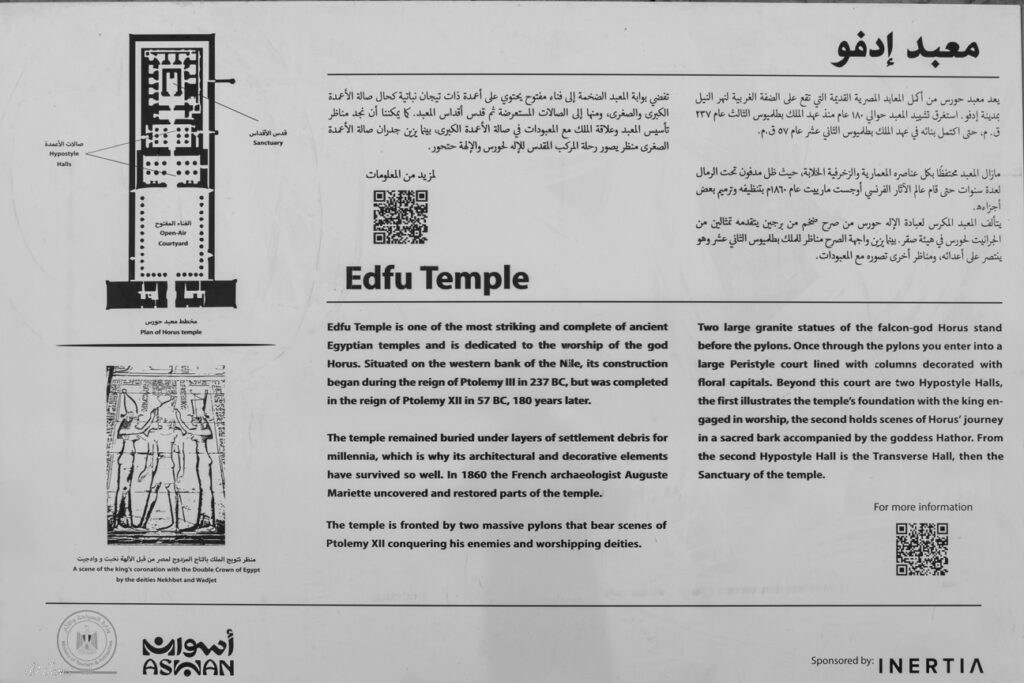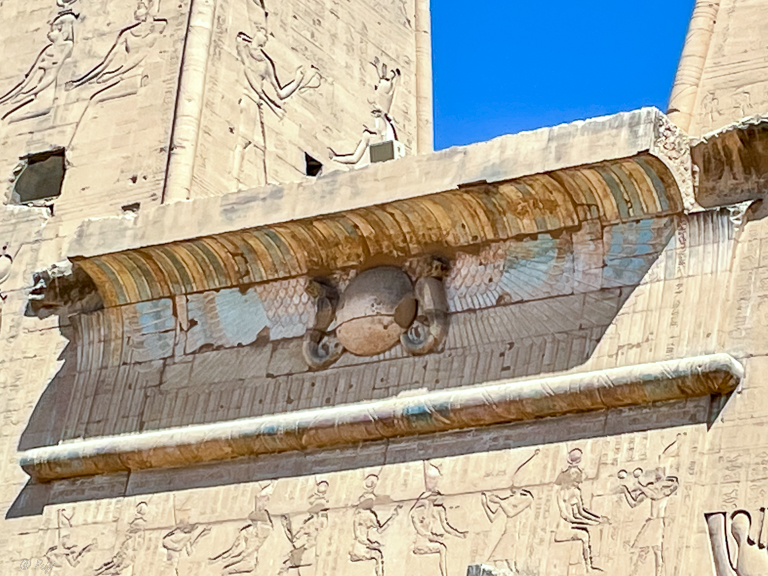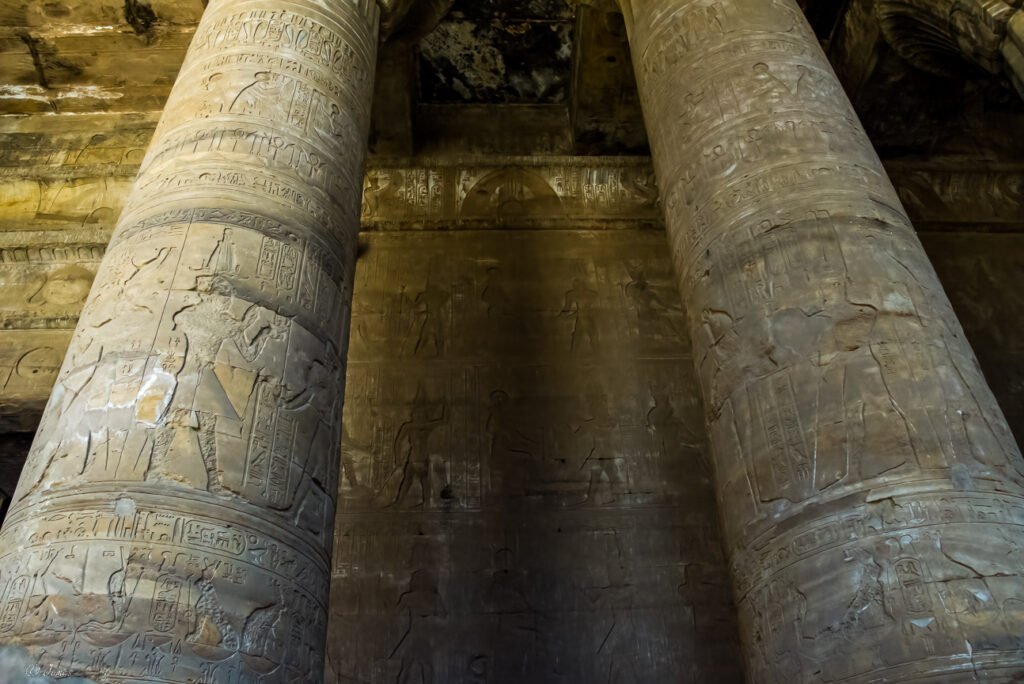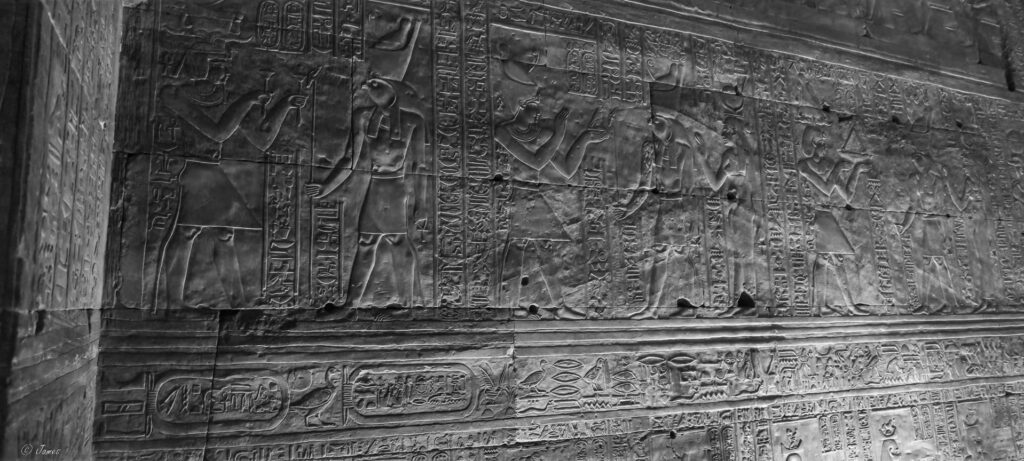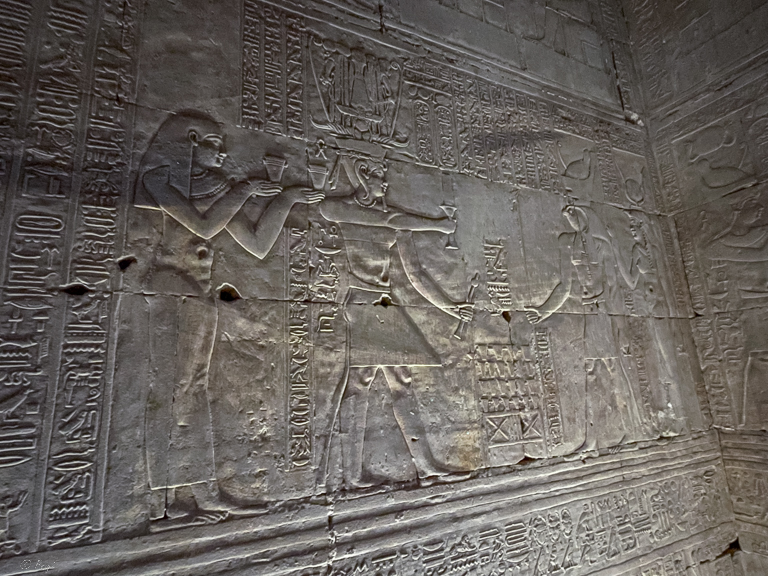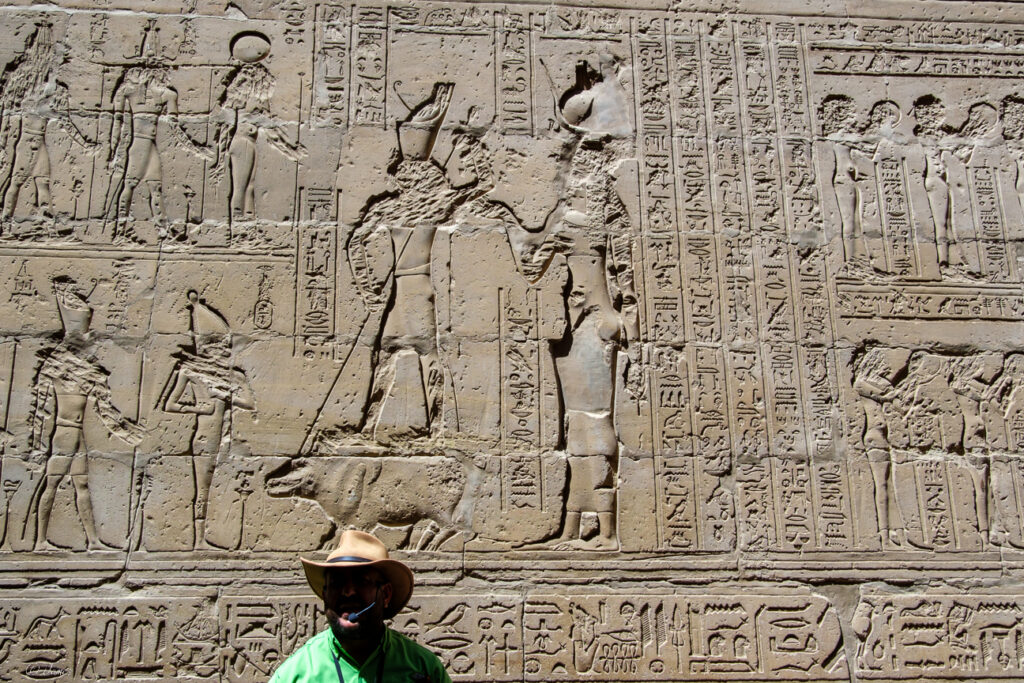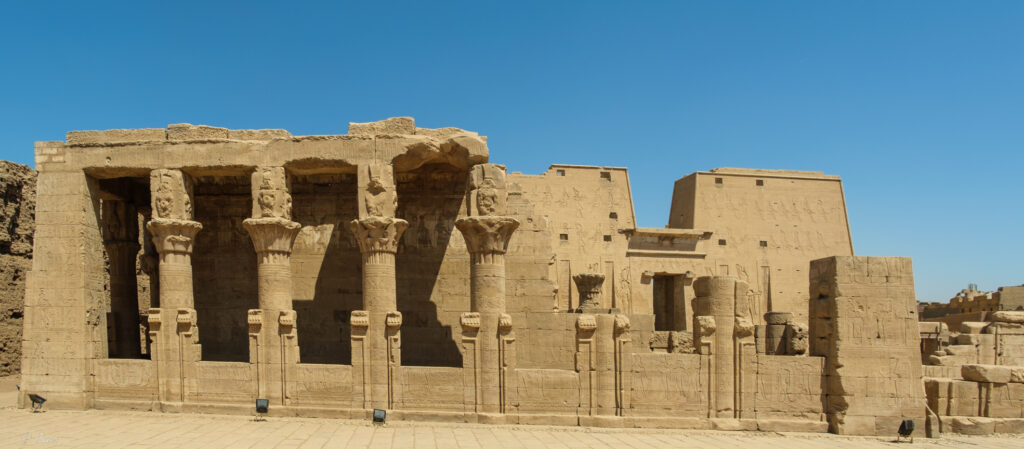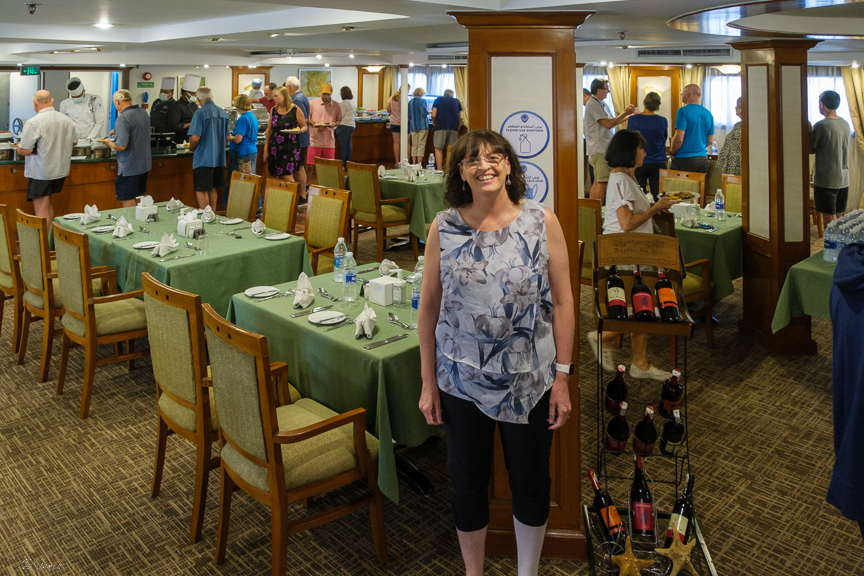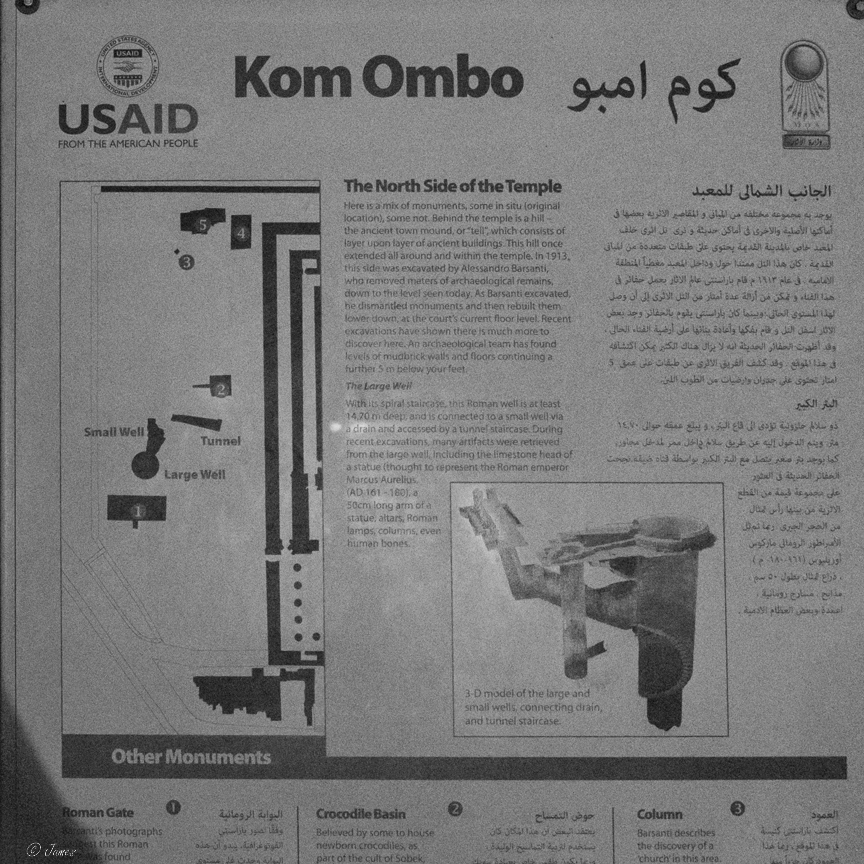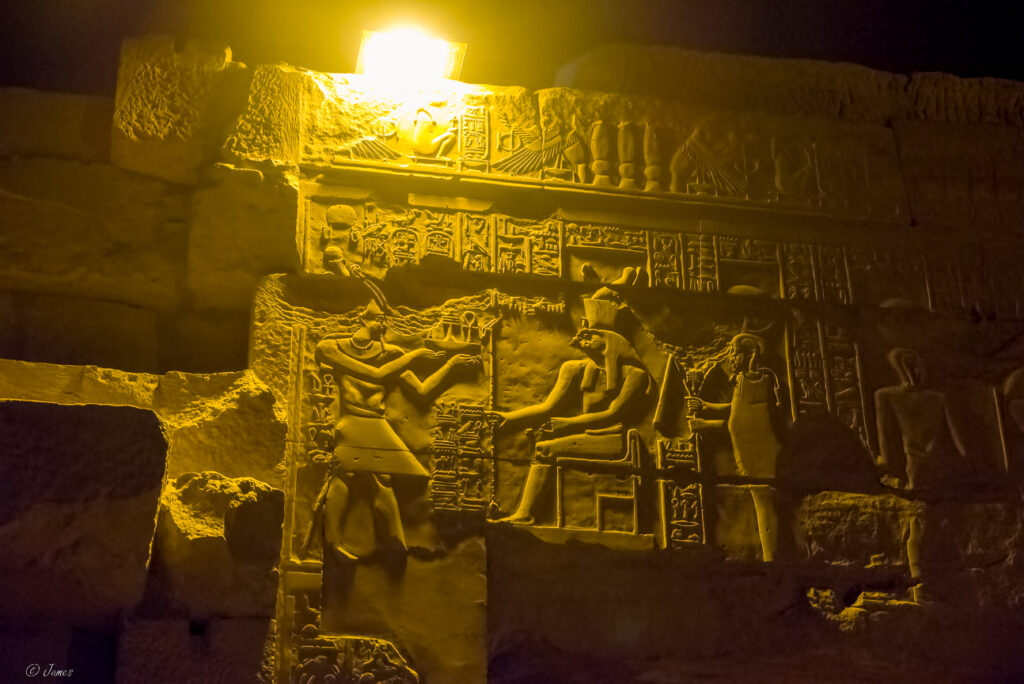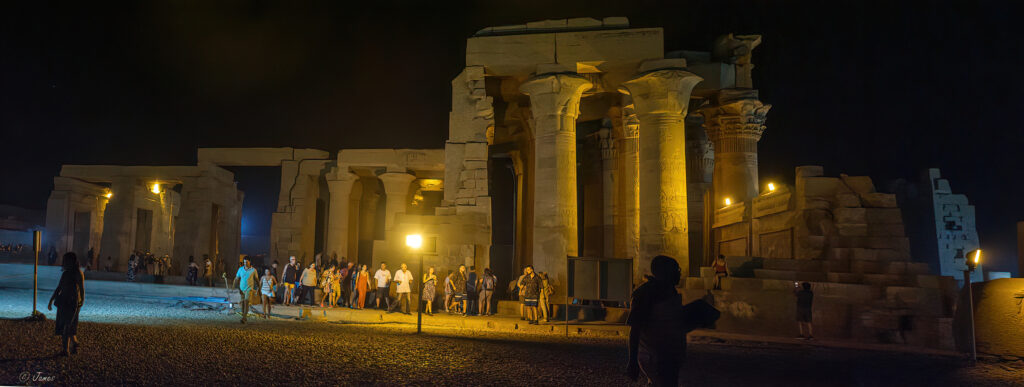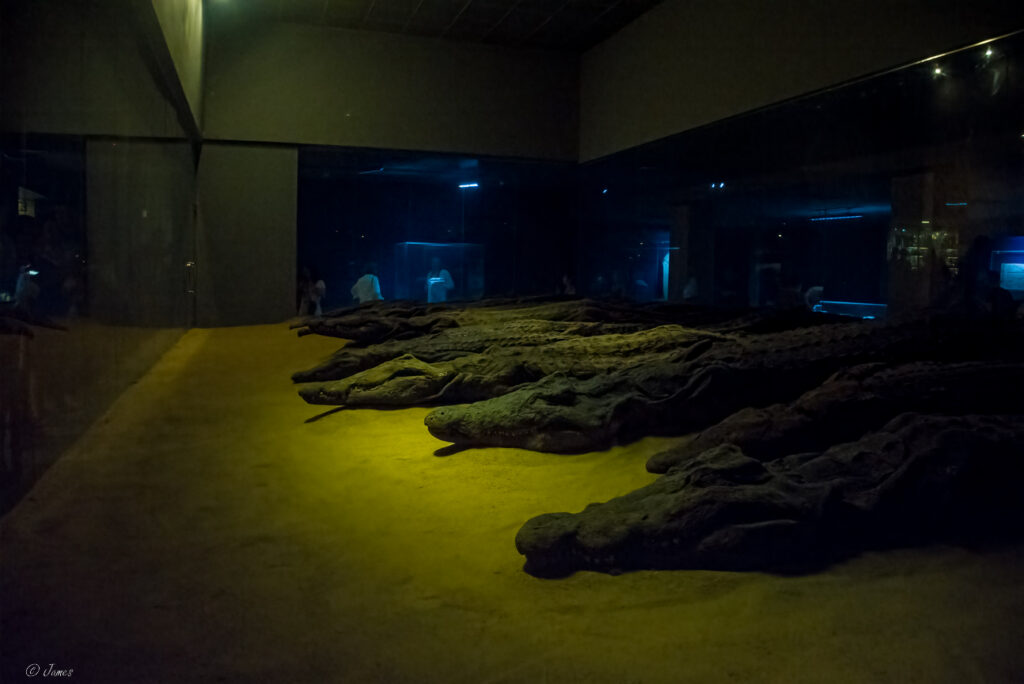This morning we found ourselves in Edfu. After a quick breakfast, we were allocated a horse buggy and driver, to take us a kilometre to the Temple of Horus through the dusty old streets. This beautiful and remarkably well-preserved temple is an important Ptolemaic site where the Greek rulers portray themselves as Egyptians on the walls while copying their art and religion.
Its architectural and decorative elements have survived well as the temple remained buried under layers of settlement debris till 186 when the French archaeologist Auguste Mariette uncovered and restored parts of the temple. Two large granite statues of the falcon-god Horus stand before the pylons. There is a huge sun disk with 2 cobras overlooking the entry, eyes open, sending a message to everyone that Horus never sleeps.
The temple was built by Ptolemy III between 284 – 20 2BC and finished by Ptolemy XII around 50 BC. It is one of the best preserved monuments, dedicated to Horus, Hathor and her son Harsomtus. The inscriptions on the walls provide important information about the language and religion of Hellenistic Egypt. Their calendar had 360 days in three seasons; the five remaining days were for festivals. Each year a statue of Hathor was transported south from Dendarah temple to visit Horus, representing their marriage, marked by a great festival. One of the inscriptions seems to show a woman birthing in a squat position. In another, Horus stands on a speared hippo before his mother, Isis (image 1990).
Many images have been defaced and the ceilings burned, possibly when Egypt became a Christian nation. The temple was buried under layers of flood sediment and settlement debris for thousands of years, which preserved it, till uncovered in1860. It is fronted by two massive pylons on which are scenes of Ptolemy XII conquering his enemies and worshiping gods. Two large granite falcon-god statues (Horus) stand in front. The large Peristyle court lies beyond the entry, each column topped by a floral capital. Two Hypostyle Halls follow, illustrating the Pharaoh in worship, and then the journey of Horus in a sacred barque with Hathor, a model of which is in the last space, the Sanctuary.
In approximately 2350 BC, Egyptians began to view Horus as the son of Osiris and Isis. One of the most popular Egyptian myths focuses on the birth of this form of Horus. Known as Harsiesis, or Horus the Younger, this version of Horus was born the son of Osiris and Isis.
Egyptians viewed Osiris as a god of peace and prosperity. His younger brother, Seth, became jealous and destroyed Osiris by trapping him, drowning him and distributing the pieces of his body all over the world. Osiris’s wife and sister, Isis, gathered all the pieces of Osiris together. With the help of Anubis, the two performed the first Egyptian embalming to prepare Osiris for the afterlife. With magic, they were able to bring Osiris back to life for a short period of time. Isis became pregnant during this time, later giving birth to Horus. Isis and Hathor protected the young Horus until he was old enough to rule. As a child, he is often seen located next to Isis on a lotus leaf.
According to the Egyptian myth, Horus lost his left eye in a struggle with Seth. The eye was magically restored by Hathor, and this restoration came to symbolize the process of making whole and healing.
We returned to the ship for lunch, as we sailed to Kom Umbu, arriving at dusk. We hurried off for a short walk past many shops to the temple.
The temple of Kom Ombo (Umbu) (Small Mountain of Gold) 60km south, dates close to the end of the Ptolemaic period. Building started around 180 BC by Ptolemy VI and was completed by 47 BC in the time of the last Ptolemaic dynasty, Ptolemy XIII.
There are 2 entries, 2 altars, and 2 holy boats, one for the crocodile god and one for Horus. We heard that they did pregnancy test to work out if it was a boy or girl, using used barley and wheat. The woman would urinate on the jar of barley and the jar of wheat, and depending which one grew, would depend on the sex of the baby. This was accurate to 88%.
The temple contains 41 pillars supporting the inner and outer hypostyle halls and courtyard. It is famous for its 300 crocodile mummies, now housed directly adjacent to the temple in a museum with some on display. These were dedicated to Sobec the crocodile God worshipped in the southern half of the temple, along with Hathor and Khonsu. The northern part of the temple was dedicated to Horus. Due to earthquakes, flooding and later builders who used its stones for other projects, the temple was mostly in ruin until restoration in 1893.
Image 2050 shows Ptolemy VIII with his wives Cleopatra II and III, before the falcon-god Horus holding a shephards flail.



